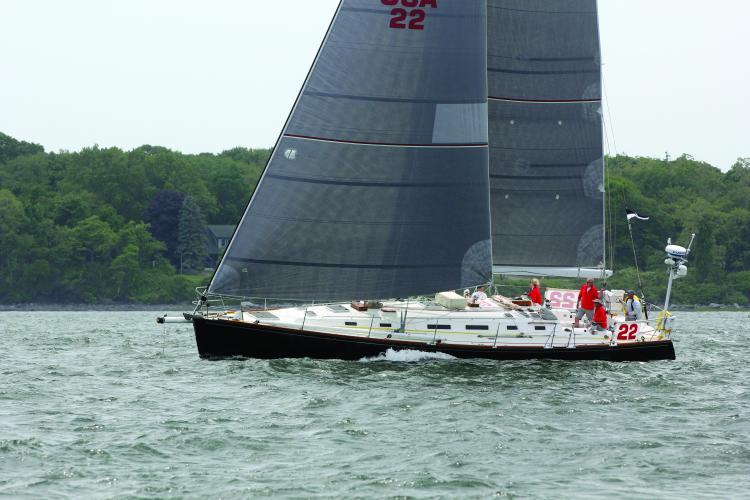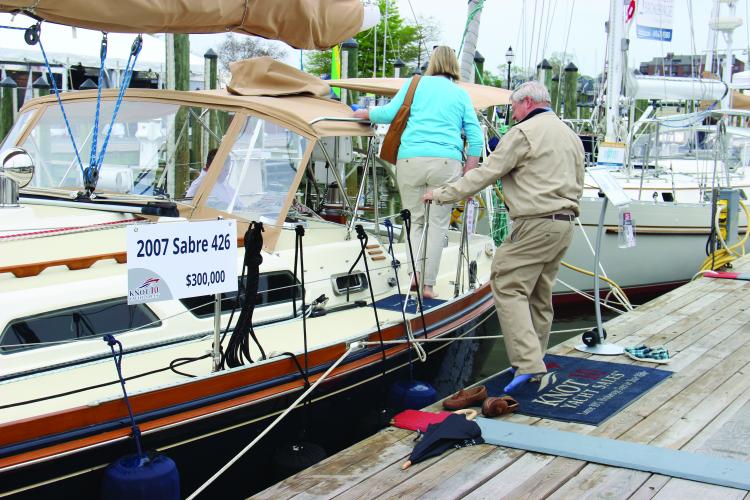What To Consider When Choosing a Good Offshore Sailing Vessel
Almost every sailor dreams, at least occasionally, of slipping the lines and sailing off into the horizon for a big, bluewater adventure. With a spirit of self-sufficiency and a heart full of wanderlust, off you would go on a life-changing passage. Have you thought about the kind of sailboat you would be captaining? Whether you’re actually planning a real offshore trip, or you’re just dreaming, here we offer several factors to weigh when considering an ocean-going vessel.
Two key questions
We posed our question, “What makes a good offshore boat?” to David Malkin of North Point Yacht Sales. Malkin has more than 30 years of sailing and boating experience, which includes more than 20 years of inshore and offshore racing, several years as a liveaboard, and extensive experience cruising. Currently Malkin campaigns his J/88 in addition to racing on other bigger boat programs on the Chesapeake. He also owns a Tiara 29.
Malkin says, “I have this discussion frequently, and there are two key questions I usually start with: Where are you going to go, and what are you going to do when you get there? Put another way—what kind of trip are you planning, and how are you going to use the boat? I ask, ‘Will a large percentage of your trip be spent offshore, or is an offshore leg simply to get you to your true destination?’”
“If you are planning to be offshore for the majority of time, that’s one kind of trip, but if you’re just moving your boat to warmer climes for a season, that’s different,” he says. “For example, if you are going to the islands, say the Caribbean, probably 20 percent of your trip will be ocean passagemaking and 80 percent will be spent island hopping and anchoring and docking once you get there. And of the 20 percent that is offshore, maybe three percent might be rough sailing.”
Based on your answers to these questions, you narrow your choices and identify the options to be considered.
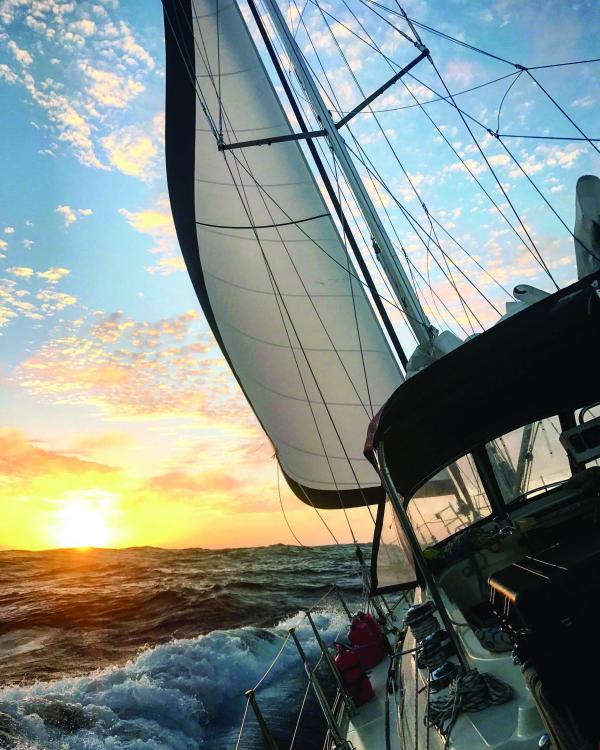
You have options
Malkin continues, “One option would be the kind of boat we think of as a traditional offshore vessel, such as a Valiant 40, with a tiny cockpit and a hull shape that’s designed for sea kindly motion. That is certainly one option to consider, especially if you plan to spend a lot of time doing true bluewater ocean sailing. Examples would include boats such as Island Packets, Valiants, Tayanas, Oysters, and old school Hinkleys. These types of boat have heavier builds and keels, with stout rigging that is capable of handling heavy forces, and their power systems are adequate for long periods away from shore power. However, these types of boats may be slower and not quite as comfortable for relaxing and entertaining when you arrive at your destination.”
“On the other hand, if your offshore stint is truly just passagemaking to get you where you want to go, people are doing those kinds of trips in all kinds of boats,” Malkin says. “If you’re planning to spend the majority of your time island hopping, then a Beneteau, Jeanneau, or Hanse would be something to consider. It might have to be accommodated with some options, but these types of boats are popular because they offer a comfortable topside and plenty of room to relax and entertain.
“When you’re boat shopping, bear in mind that the boat you see at a boat show or elsewhere can be modified, and probably should be, with heavier rigging, more handholds, a hardtop, and other upgrades if you’re taking it offshore. While some production boats might not be the best offshore choice, others are very capable when modified.”
What’s most important?
In determining the boat that’s right for you, Malkin says there are always trade-offs. “You must weigh various competing factors, and you want to be sure you’re applying the right weight to each of the factors that you weigh. In some cases you’re balancing the ocean passage, which might be the smallest part of the trip, and the features that you can use during the time at your destination.”
Another consideration is the size of the crew. Malkin says, “If it’s just a couple sailing the boat, they’ll want something that the two of them alone can handle comfortably. For most couples a 40- to 45-foot boat is generally manageable, and there are lots of choices in that size range.”
Malkin explains further, “For some people, the boat’s accoutrements are very important. They want their family and friends to come and stay with them at their destination. They want plenty of space to spread out and relax. They might want a really big cockpit or a large aft suite. A center cockpit affords the large aft cabin, but it increases the likelihood of water in the cockpit while underway—it might be a wetter ride if the weather kicks up.
“Other sailors will put more weight on sailing performance and speed,” Malkin says. “If a boat has the ability to go 200 to 250 miles per day, sailing nine knots versus six, that could make all the difference in avoiding bad weather. If you’re looking for a faster boat, with an eye to going offshore, there are some phenomenal choices, such as the J/42, J/46, J/160, Outbound 46, Sabre 402 and Sabre 426.”
And then there are those sailors who simply want a heavier displacement, or they feel that’s what they’ll need for the kind of offshore trips they’re planning. “Valiants, Oysters, Tayanas, and Island Packets come to mind in this category,” Malkin says.
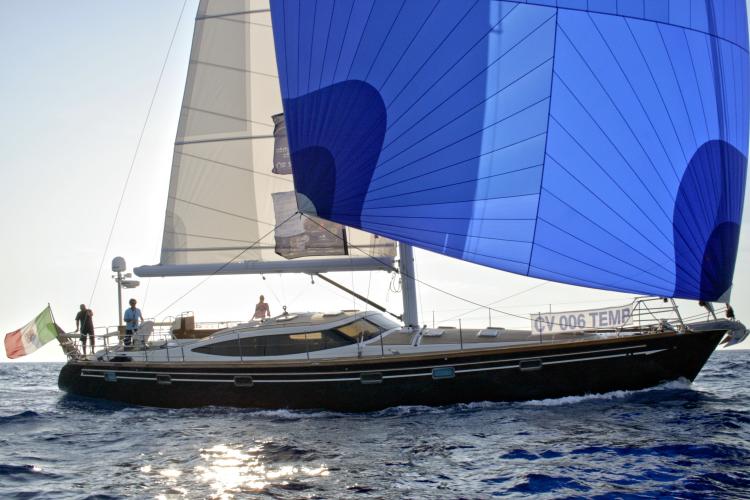
Other considerations for going the distance
For sailors whose voyages will take them farther offshore, an ocean crossing perhaps, Malkin says consideration has to be given to the possibility that weather may be unavoidable and emergency rescue might be delayed. These factors and others will drive boat preparation and modifications. A heavier displacement boat with a small cockpit might be an ideal set up for these types of longer passages.
Technological advances should also be taken into account. Malkin says, “The typical equipment that we go offshore with now is different than it was in the past, when there were fewer power requirements and often a wind generator and/or some solar power could accommodate the demand. Today AC, water makers, 12v-only refrigeration, and a variety of other appliances are becoming the norm and may require the inclusion of a genset. Again, that is based on intended usage. If your plans are to really be autonomous, then there is no chance to plug into shore power.
“Tankage is another consideration; a watermaker can be expensive, and in some locations purchasing water is expensive. Ventilation and fuel capacity are two other important factors of the equation.”
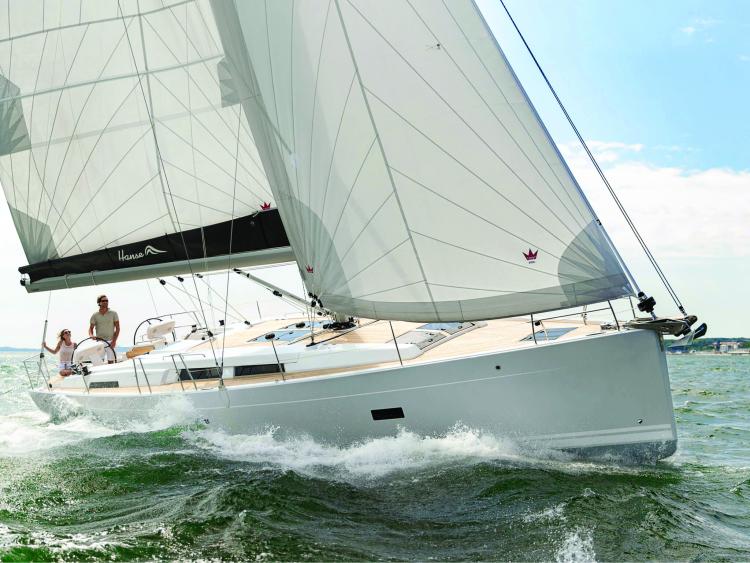
“Today’s technology is an important factor because it plays a role in keeping people out of harm’s way,” says Malkin. “Almost all sailors have navigation systems, a SAT phone linked to weather nication and information. That makes it much easier to avoid heavy weather.”
A final thought for those dreaming of making the leap to offshore: consider joining a rally. Malkin says, “You’ll have the benefit of sailing in the company and under the guidance of more experienced offshore sailors.”
Your offshore boat choice will be based on many factors. Among them are your route, skill set and experience, intended destination (and activities there), ability to avoid weather, and land-based support. When considering your choices, seek out knowledge and guidance from experienced offshore sailors, a professional yacht broker, and other experts who can help you identify and weigh the trade-offs of the various makes and models.
~By Beth Crabtree
